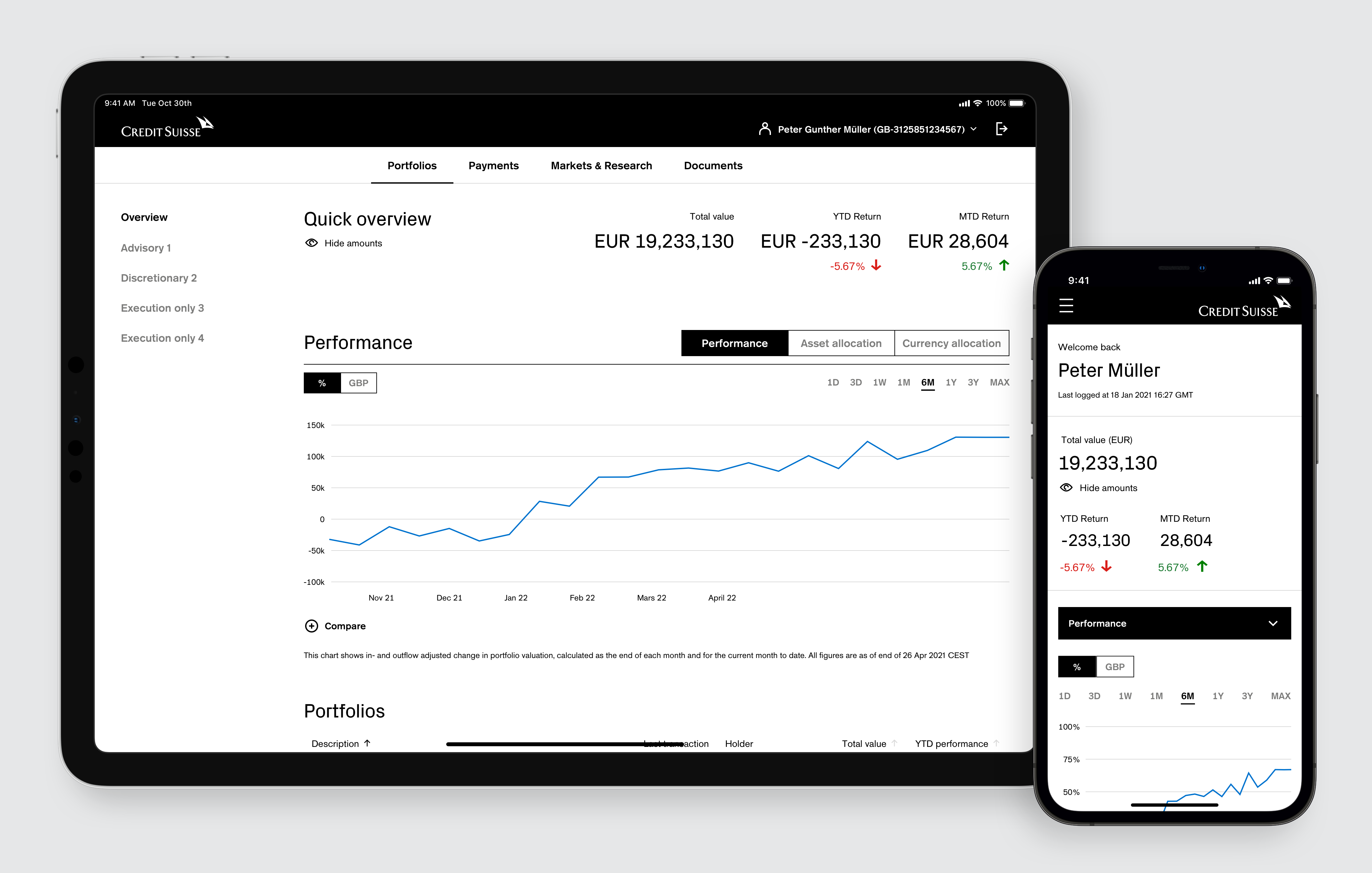
Credit Suisse
Team leadership (2020-2022)
During my time at Credit Suisse, I headed the wonderful design team at the International Wealth Management division. We worked on both the Credit Suisse Digital online banking app — web and mobile — and on a number of complex and critical internal apps used daily by relationship managers and investment consultants with billions under management.
Below you’ll find a peek into my leadership style rather than a conventional design case study.
Philosophy
My role at CS was to enable my design team to do their best work. I nurtured a culture of trust, passion, courage and ownership — a founder’s mindset. In our daily work, I strived to create opportunities for personal growth alongside the pursuit of company objectives.
Leadership is about serving and supporting the team. I’m a player-coach, putting my years of design experience to use in candid design critiques, frequent and direct feedback, coaching and mentoring. Of course, every designer is different, and so is how we work together.
I encouraged my team to be close to product owners and to blur the lines between design and product. These are but two sides of the same coin — product working on the ‘what’, design working on the ‘how’. We just use different tools and currencies.
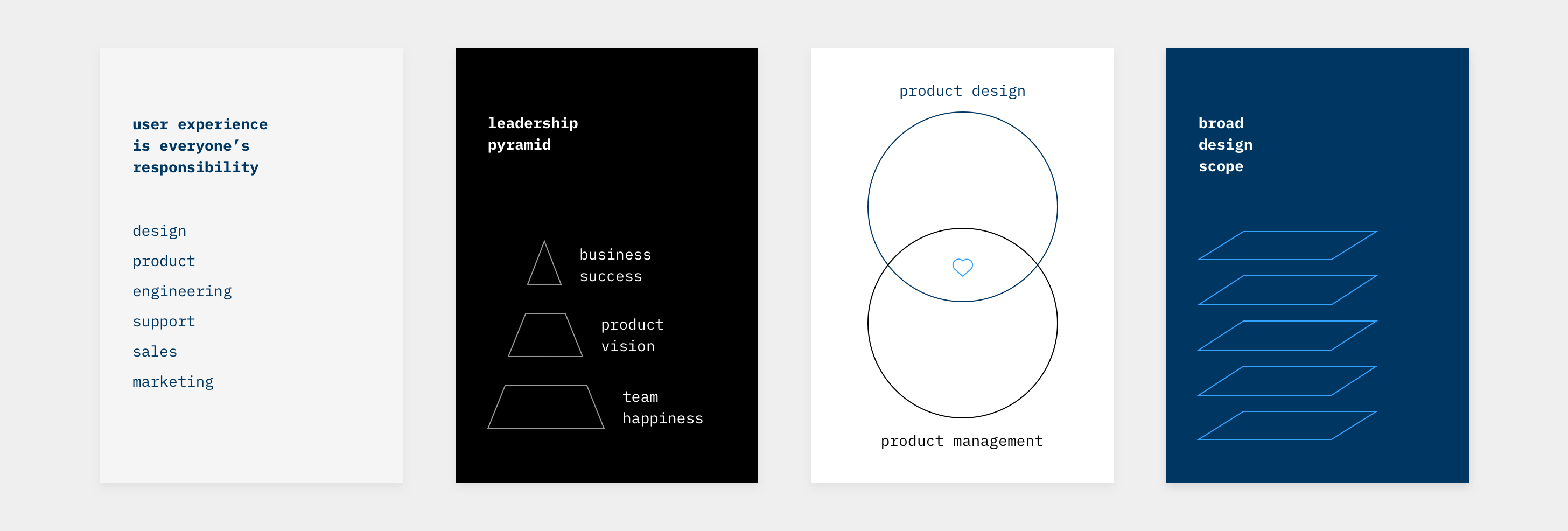
Transforming the design culture
Finding meaning and purpose
After taking over the team, one of the first things I did was to run design charter workshops. We collected what’s working, what needs to be improved, what gigs we want to do, what norms we want to follow, etc.
Based on these exercises and the strategy I set out to follow, I repositioned the team, our way of working and our place in the organization.
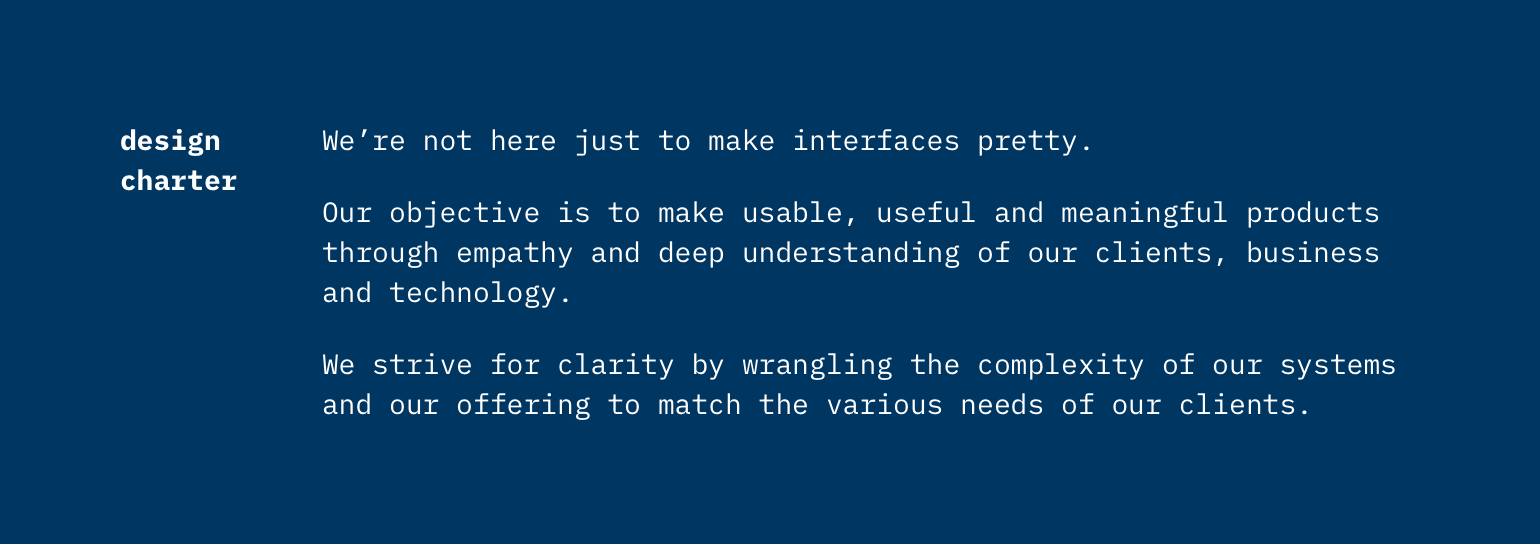
Enabling the team
My priority is to provide a stable, safe and trustful environment for my team to work and grow.
At Credit Suisse, I ring fenced time to allow for more exploration and discussions. I promoted a culture of open discussions and critiques, not just within the design team but with the larger organization as well. To be able to support the team in shaping our products, I got involved in our projects on a daily basis.
Establishing a centralized partnership
My team used to work both as an internal agency and embedded in product teams. To build and support a unified design culture and a consistent user experience, I fostered a centralized partnership set-up.

This model matched the company’s varied projects very well and delivered a good balance between empowerment and flexibility.
Nurturing ownership
A sense of ownership lets designers work with pride and, ultimately, do their best work. The attitude of “it’s my job” is the most important value in a product team (imho). I encouraged my team to blur the lines, work towards product-level targets and invest time in deeply understanding our products and clients. We contributed to our products in ways that went well beyond what the design team was mandated to do, earning the team a lot of respect and recognition.
Broadening the design scope
When I joined, the design team already had a great design system and delivered neat UIs following business and product requirements. My aim was to extend the scope of our work to be more holistic.
I hired UX and research-minded designers to complement the existing team and we started taking up more responsibilities and broadening the range of our deliverables. We extended the design system with a content style guide, general interaction pattern specs, we created a process for maintaining and updating the design system while keeping it in-line with the front-end codebase.
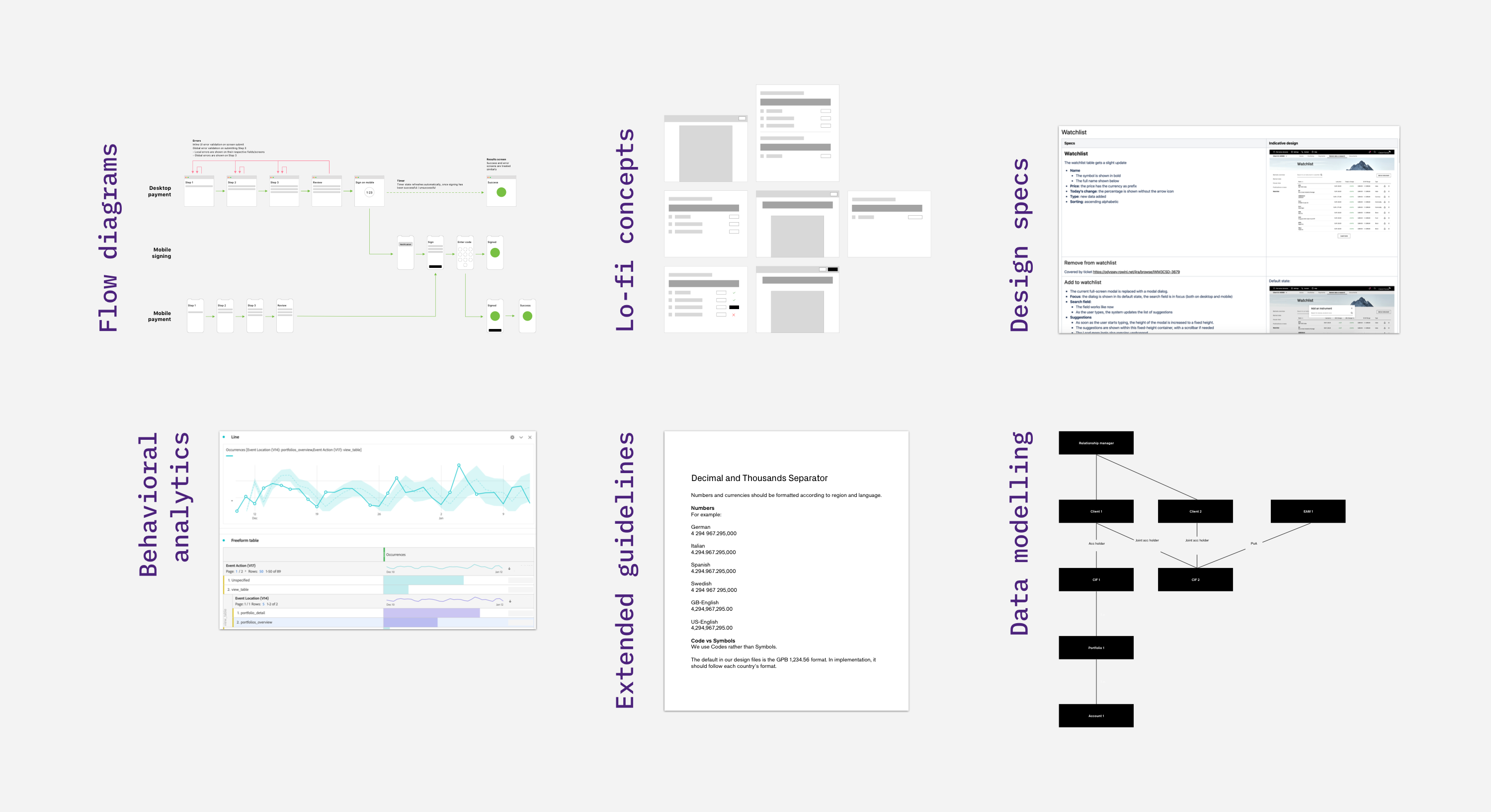
We started investing more heavily on prototypes, started written specs, analytics definitions, wrote content, etc.
Creating an open, data-driven design culture
I opened up the design process, inviting stakeholders early and often, experimenting with formats to make these discussions fun and effective. We also worked closely with the bank’s UX lab to validate ideas.
I spearheaded the introduction of advanced behavioural analytics, adding it to our design toolkit. This enabled design discussions based on facts rather than stakeholder opinions.
Wrangling complexity

Investment banking deals with heavy subjects and provides an endless supply of wicked design challenges.
I established a culture of relentlessly challenging ideas and concepts that could be further simplified. We strived for simplicity in both our work and our processes. An example for this was to introduce general design principles for our different products, features and challenges. They helped us to make better, faster and more consistent choices.
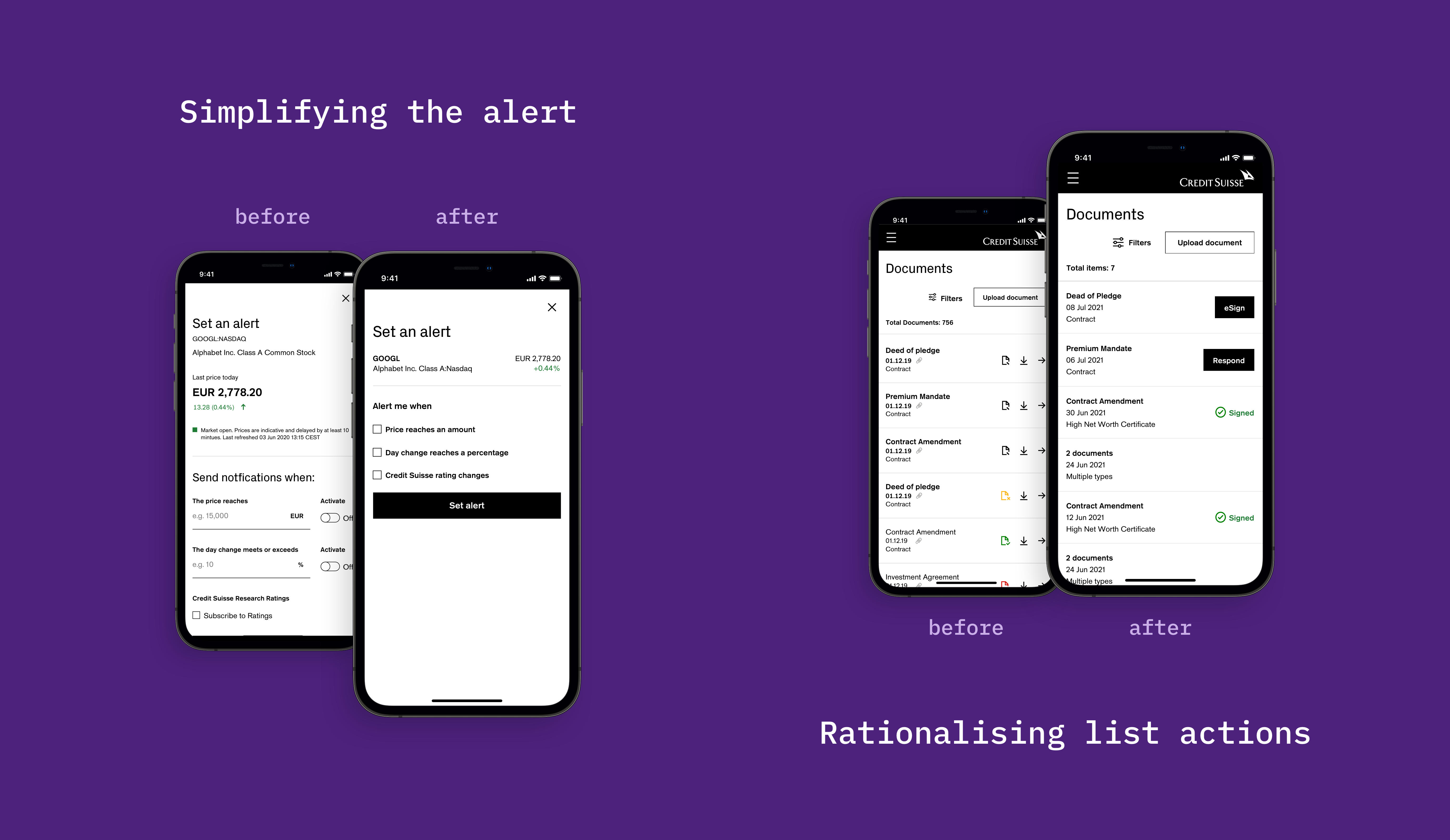
Defining product strategy and roadmap
I played a pivotal role in defining the strategy and roadmap for our online banking app — web and mobile.
I conducted several sessions with my team to create the backlog of product improvements consisting of new features and improvements based on usability testing, client feedback and our own findings and ideas to support the platform strategy. After designing, grooming and prioritizing the items on the backlog, I presented it to management on board meetings, where we debated and and signed off the roadmap.
My manager's view
"Zoltan pursues his mandate as head of UX/UI with passion. He approaches the UX/UI efforts with a keen sense on quality and provides superior results. Even under challenging conditions (ie. time and capacity constraints) he applies pragmatism and yet delivers consistently very good and implementable results.
In his work and dialogue, Zoltan arguments rationally and credibly and earned the respect and trust of the people he works with. Zoltan shows flexibility in pursuing ad-hoc elements, changing priorities and timelines and always accommodates also under time constraints. He holds high standards to himself and the team.
He made the right calls in upgrading his team and formed a highly capable team delivering the best results ever so far."


